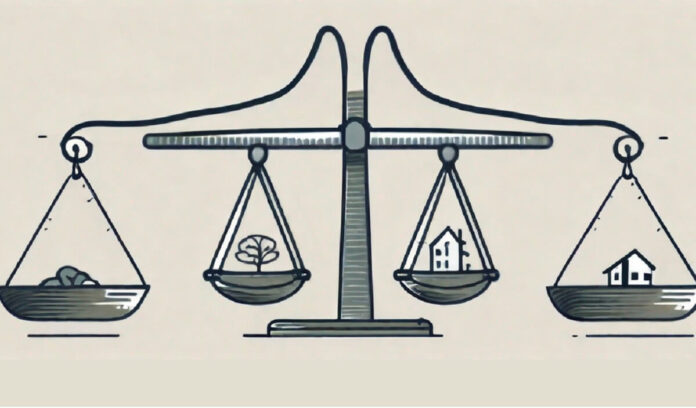Stakeholder prioritization, a pivotal process in project management and organizational strategy, involves the identification and categorization of stakeholders according to their level of influence, interest, and impact on the project or initiative. Early determination of key stakeholders allows for efficient resource allocation by project managers; it also enables effective expectation management–thus cultivating meaningful relationships that propel towards successful completion of projects.
Importance of Stakeholder Prioritization
The compass of stakeholder engagement’s complexities is stakeholder prioritization; in any endeavor, varying degrees of power, influence, and interest are wielded by stakeholders – this necessitates a differentiation between those who hold significant sway over the project’s outcomes and those with more peripheral involvement.
Understanding Stakeholder Influence and Impact
Not all stakeholders bear equal significance in the realm of stakeholder prioritization: some hold authoritative power to shape project decisions, whereas others remain mere observers. To appropriately prioritize these individuals–a task pivotal for successful management by project managers–an evaluation regarding each stakeholder’s level of influence, impact and interest in the venture is indispensable.
Stakeholders wielding high levels of influence have the capacity to shape project outcomes through their decision-making authority, financial resources or organizational power. By pinpointing these influential figures; it guarantees a meticulous consideration of not only their concerns but also perspectives over the course of an entire project lifecycle.
Stakeholders possessing significant impact are those whose decisions or actions directly influence project objectives, timelines, and deliverables; understanding this potentiality allows project teams to proactively tackle concerns–mitigating risks that might emerge during the execution of a project.
Those with a vested interest in the project–project sponsors, end-users, regulatory bodies, and community groups–stand to either gain or lose from its outcomes. Project teams can tailor their communication strategies and engagement efforts to foster positive relationships with stakeholders by prioritizing them according to their level of interest; this alignment of interests is key.
Prioritization Techniques and Strategies
A systematic approach to stakeholder prioritization involves the categorization of stakeholders, based on their level of importance for achieving project success. Project managers can effectively prioritize these stakeholders using several techniques and strategies; these include:
The Power/Interest Grid
A commonly utilized tool for prioritizing stakeholders in accordance with their power and interest levels within the project, divides these participants into four distinct quadrants: High Power/High Interest; High Power/Low Interest; Low Power/High Interest–and finally —Low Power/Low Interest. Project managers, by prioritizing stakeholders in the High Power/High Interest quadrant, can actively engage key stakeholders and address their concerns.
The Salience Model
It evaluates stakeholder prioritization along three dimensions–Power, Legitimacy, and Urgency. We assess stakeholders based on their power to influence the project; we gauge their legitimacy with respect to its goals and objectives; finally – we determine urgency of needs or concerns they present. Project teams should allocate special attention to stakeholders who achieve high scores on all three dimensions, as they are considered highly salient.
Stakeholder Mapping Workshops
Stakeholder mapping workshops convene project stakeholders to collectively discern and prioritize key participants; through guided dialogues – coupled with interactive exercises – they can exchange insights, identify mutual objectives, and harmonize priorities for the ultimate aim of ensuring successful project execution.
Continuous Monitoring and Adaptation
Stakeholder prioritization transcends a singular event; it unfolds as an unceasing process through the entire project lifecycle. The influence, interest or impact of stakeholders might mutate with progressing projects. Henceforth, continuous monitoring of these factors by project managers is essential – they must tweak their prioritization strategies accordingly. Ensuring the effectiveness and alignment of engagement efforts with the ever-evolving needs and dynamics of the project environment necessitates regular reassessment.
Alignment with Organizational Goals
Understanding how various stakeholders contribute to the organization’s overall mission and vision empowers project managers to prioritize engagement efforts strategically; this fosters synergy, maximizes collective impact–going beyond mere enhancement of individual projects. Indeed, effective stakeholder prioritization aligns with broader organizational goals and objectives: it is a critical tool for not just improving project outcomes but also deepening relationships with key actors in the system – an essential step towards cultivating collaborative culture laden with shared triumphs.
Conclusion
Identifying key stakeholders, assessing their influence and impact, then prioritizing engagement efforts accordingly: these are the foundational steps towards effective project management and organizational strategy. Such a process not only enhances communication but also manages expectations; it builds meaningful relationships—a driving force for project success. With projects evolving into complex entities intertwined with various factors—prioritizing stakeholders becomes an indispensable tool to navigate this dynamic landscape of engagement ensuring alignment with all pertinent goals and objectives.








































